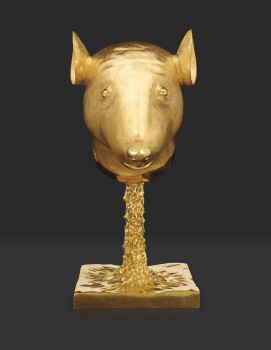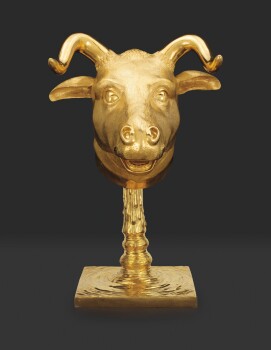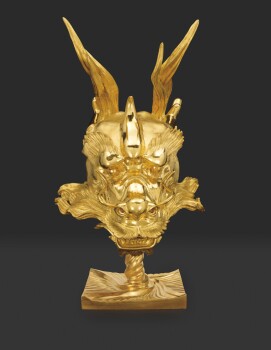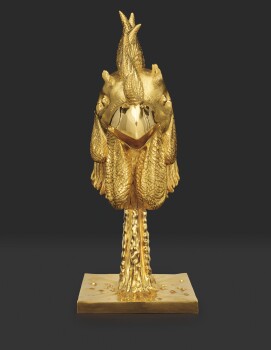“My work is always dealing with real or fake, authenticity, what the value is, and how the value relates to current political and social understandings and misunderstandings. I think there’s a strong humorous aspect there.”
The 12 Zodiac Heads

The International Tour for the Circle of Animals/Zodiac Heads: Gold

- Vero Beach Museum of Art, Vero Beach, FL | June 1 – December 15, 2019

- Arken Museum of Modern Art, Skovvej, Denmark | extended loan July 2013 – June 2019

- K20 and K21, Kunstsammlung Nordrhein-Westfalen, Düsseldorf , Germany | May 18 – Sept. 1, 2019

- Farnsworth Museum, Rockland, ME | March 24 – December 30, 2018

- Mucern, Marseille, France | June 19 – November 12, 2018

- Museum für Kunst und Gewerbe Hamburg, Germany | November 17, 2017 – March 18, 2018
- Nevada Museum of Art, Reno, Nevada | July 23 – October 23, 2016

- Tucson Museum of Art, Tucson, AZ | February 12 – June 26, 2016
- National Gallery of Victoria, Melbourne, Australia, Andy Warhol | Ai Weiwei | December 11, 2015 – April 24, 2016

- Phoenix Art Museum, Phoenix, AZ | October 3, 2015 – January 31, 2016

- Portland Art Museum, Portland, OR | May 23 – September 12, 2015
- Palm Springs Museum of Art, Palm Springs, CA | December 20, 2014 – May 15, 2015

- Blenheim Palace, Oxfordshire, United Kingdom | September 28, 2014 – January 15, 2015

- The Crow Collection of Asian Art, Dallas, TX | September 14, 2013 – March 2, 2014

- The Garage Center for Contemporary Culture, Moscow, Russia, Personal Choice group exhibition | February 14 – April 6, 2014

- The LongHouse Reserve, East Hampton, NY | August 2 – October 12, 2013

- The Museum of Contemporary Art San Diego, CA | February 22, 2012 –July 29, 2012

- Musee d’art Contemporain de Montreal, Canada, The Zoo Exhibition group exhibition | May 24 – September 3, 2012

History of the Zodiac Heads
Ai Weiwei’s iconic series of sculptures, the Circle of Animals/Zodiac Heads, is a significant international project that simultaneously signals his position as China’s most pervasive artist whilst exploring themes of globalization and identity that inform his work. The series recreates the twelve traditional Chinese zodiac sculptures that once adorned the Yuanming Yuan fountain clock, an artistic and architectural centerpiece of the imperial gardens outside of Beijing enjoyed by several Qing dynasty rulers in the 18th and 19th centuries.

The Palace, formerly the residence of the emperors of the Qing Dynasty, was destroyed by British and French forces during the Second Opium War in 1860.
Photo by Hulton, Image © Archive / Getty Images
The original zodiac head sculptures were subsequently looted from the fountain by French and British soldiers during the Opium Wars. This devastating plundering was one of a series of episodes that are now collectively known as the “century of humiliation,” spanning approximately 1840 to 1945. In 1976 following the death of Chairman Mao, the demise of the Cultural Revolution which sought to destroy cultural artifacts, and the subsequent reopening of China’s economy towards the end of the 20th century, there was a renewed interest in the zodiac heads both in China and abroad. Only seven of the original heads still exist and the whereabouts of five remain unknown. As a result of the increased fervor for the ancient Chinese zodiac heads over the past several decades, their monetary value on the international art market has soared and they have since become touchstones of an ardent—and at times contentious—sense of nationalism.































